





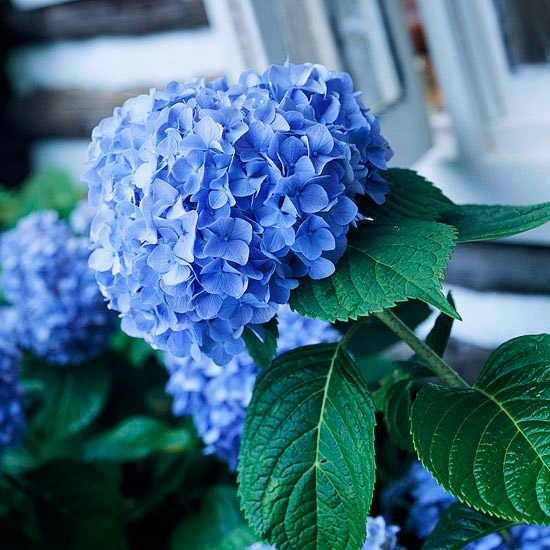
All hydrangeas love water. Their name comes from the Greek "hydra" meaning "water" and "angeon" meaning "vessel." Hydrangea leaves sag when the plant is too dry, telling you they need water. The leaves also go limp in midday heat, so wait until evening to see whether they recover before you water them.
Whether to fertilize is a touchy question with hydrangeas. Most hydrangeas don't need much extra fertilizer, but woody plant guru Michael Dirr, a retired University of Georgia horticulture professor, says you can apply a balanced slow-release fertilizer in late winter to early spring. Be careful: If you apply too much fertilizer, you might get more leaves than blooms. Too much nitrogen also produces long stems that might not set flower buds. Stop fertilizing in late summer to let the plant go into winter dormancy.
The key to getting more hydrangea flowers is to understand which hydrangea you're growing. Each type has slightly different requirements.
Choose the best hydrangeas for your yard.
Discover more hydrangea varieties in our Plant Encyclopedia.
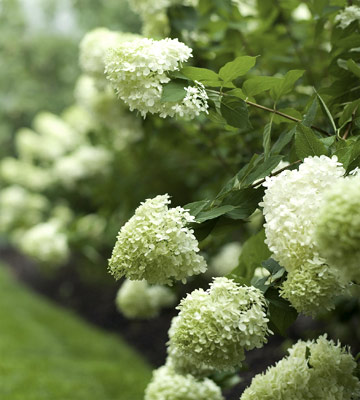
Panicle hydrangeas, with their big cones of flower clusters, are the most reliably hardy in Zones 3-8. They grow each year on new wood, so you can prune them any time and not worry that you're cutting off the next year's flower buds. You can plant them in full sun in Northern states, providing only a bit of shade in hot zones, because they need sunlight for best flowering.
Common varieties include 'Grandiflora', Limelight, and Vanilla Strawberry.
Learn more about gorgeous Vanilla Strawberry Hydrangea.
How to Get More Flowers:
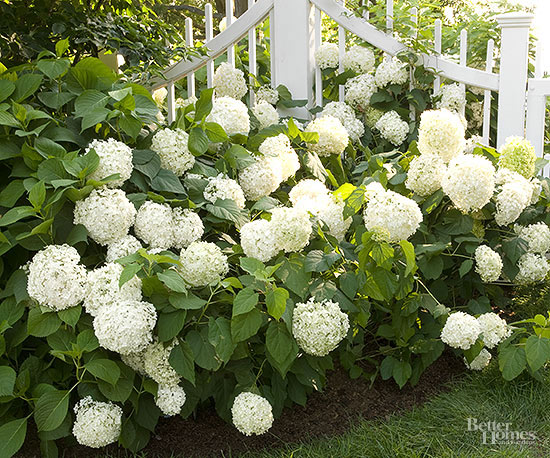
Smooth hydrangeas, named for their large, smooth leaves, are easy to grow in Zones 4-9 in sun or shade. The best known, 'Annabelle', was discovered by a horticulture professor in the 1960s and traced to Anna, Illinois. There are many types of smooth hydrangeas on the market today, including two varieties that bloom pink instead of the typical white. You can cut smooth hydrangeas to the ground each in spring and they will still produce flowers.
Common varieties include 'Annabelle', Endless Summer Bella Anna, and Invincibelle Spirit.
How to Get More Flowers:
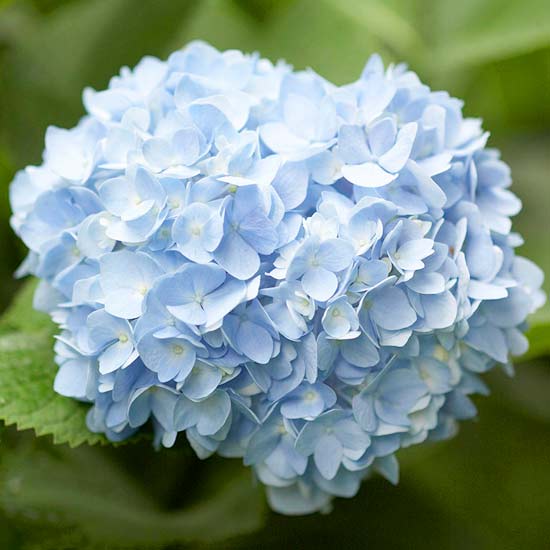
The bigleaf group (Hydrangea macrophylla) and its cousins, the oakleaf (H. quercifolia), climbing (H. anomala), and serrate (H. serrata) hydrangeas, can present the biggest challenge when it comes to getting more flowers. These hydrangeas all primarily bloom on the previous year's stems (sometimes referred to as "last year's wood"). If you prune the stems one year, you are likely cutting off the next year's flowers. It's fine to remove any dead stems in spring. If you want to prune for shape, do it no later than early August, because the following year's flower buds are set when temperatures start to drop.
In cool-summer climates with abundant summer moisture, bigleaf hydrangeas can be grown in full sun. Where summers are hotter or dry, though, these hydrangeas appreciate bright morning sun and afternoon shade. Growing these -- or any type of hydrangea -- in too much shade will result in fewer blooms or none at all.
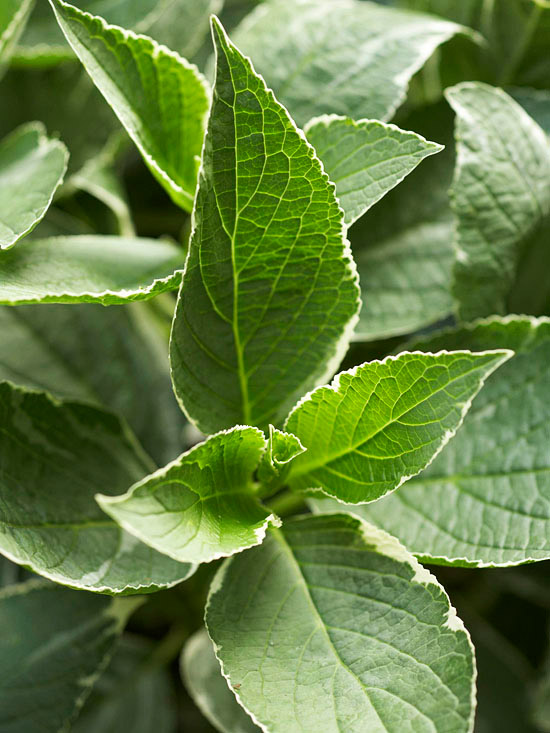
Bigleaf hydrangeas can be especially touchy when grown in Northern states. Although some varieties are hardy in Zones 4 or 5, many are only reliable in Zones 6-9. In cold regions, flowering can be affected by early-fall frost, late-spring frost, or super-cold winter temperatures. If you wish, you can cover bigleaf hydrangeas with 12-18 inches of mulch after the first frost, removing the mulch as soon as the threat of frost passes in spring.
Consider growing one of the many new hydrangeas that bloom on old and new wood. They're often called rebloomers, but they're technically remontant, meaning they flower more than once in a season. Or enjoy bigleaf hydrangeas only for their leaf colors; some varieties sport green-and-white variegated leaves or lemon-lime hues.
Common varieties with variegated foliage include Guilded Gold, 'Lemon Wave', and Light-O-Day.
Learn about Wedding Gown hydrangea, a double reblooming lacecap.
How to Get More Flowers:
Copyright © www.100flowers.win Botanic Garden All Rights Reserved